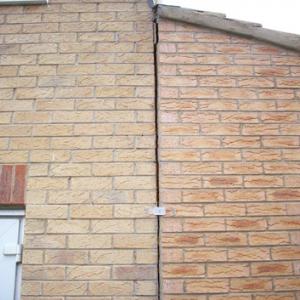
Common causes of subsidence
Often subsidence is related to the moisture content of the soil underneath the foundations. Certain soil types are more susceptible to subsidence than others. Clay soils are particularly vulnerable since they shrink and swell in relation to their moisture content.
Vegetation near the foundations can cause subsidence because roots suck moisture from the soil, causing it to shrink. This is more of a risk during long periods of dry weather as thirsty plants push their roots through building foundations in search of water.
Water escaping from damaged drains can sometimes soften, or even wash away the ground beneath the foundations resulting in ground movement and therefore building movement.
Common causes of subsidence
- The building or structure has been built on compressible clay soil
- Soil under the building/structure has not been compacted properly during construction
- Water damage has weakened underlying soil and foundations
- Movement of varying soil structures underneath foundations
- Vibration
s& moving of soil at nearby excavations - Vibration from passing traffic
- Incomplete/poor quality foundation works
- Changes in environmental or surrounding circumstances
